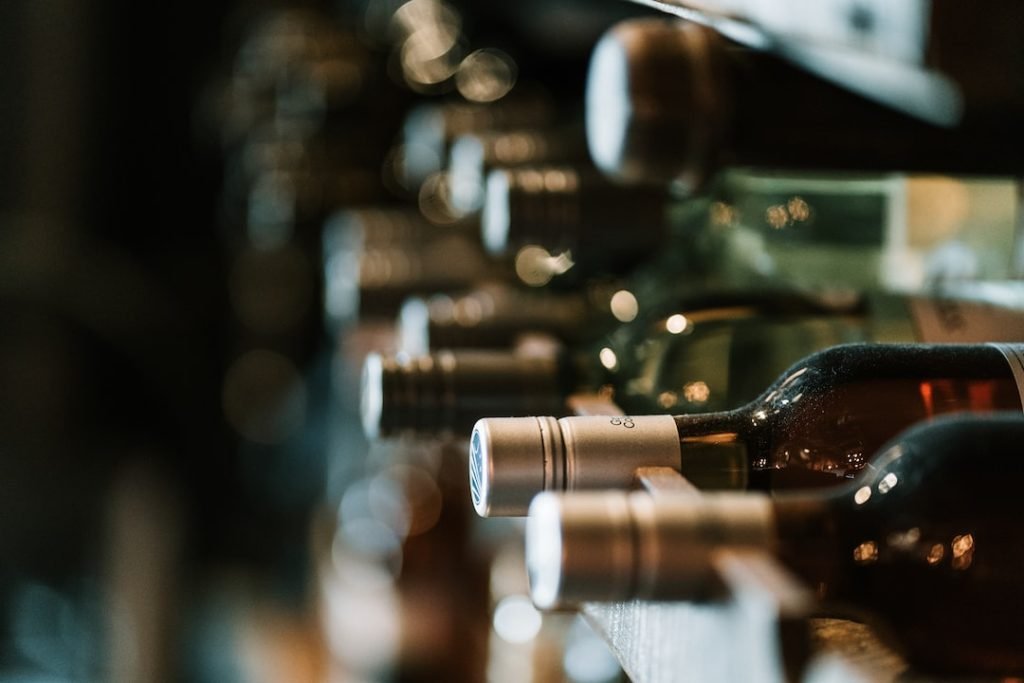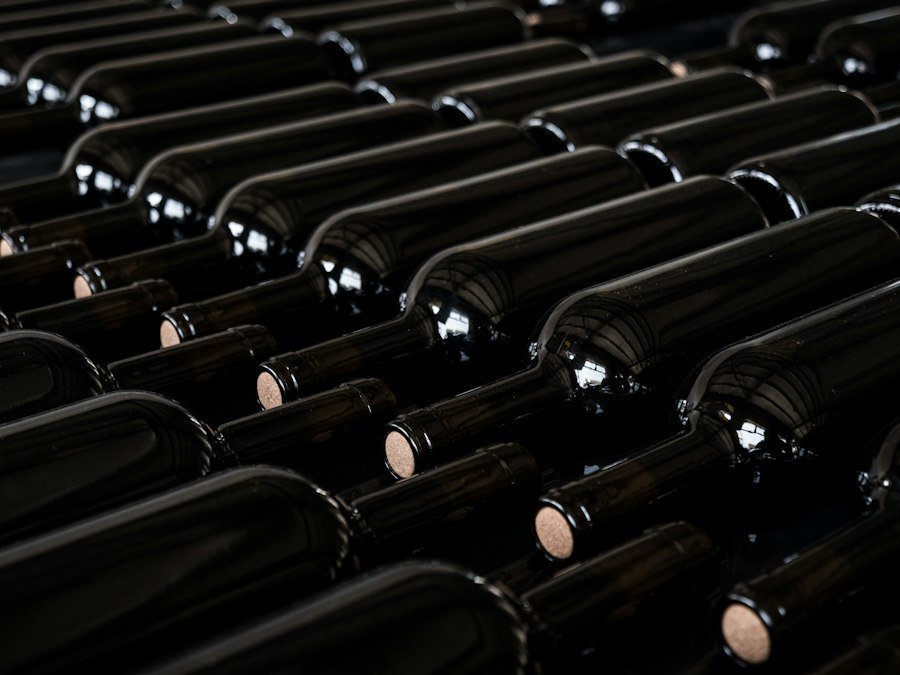

How to Talk About Wine and Winemaking in Spanish: 20 Oenology Terms
Oenology, also known as enology, is the study of wine and winemaking. It encompasses everything from the cultivation of grapes to the fermentation process and the aging of wine. Oenology is a crucial field in the wine industry as it ensures the production of high-quality wines.
Learning wine terms in Spanish is important for several reasons. Firstly, Spain is one of the largest wine-producing countries in the world, with a rich history and diverse range of wines. By understanding Spanish wine terms, you can navigate wine lists, communicate with winemakers, and fully appreciate the nuances of Spanish wines. Additionally, if you work in the wine industry or have a passion for wine, knowing these terms will enhance your knowledge and allow you to engage with Spanish-speaking wine enthusiasts.
Table of Contents
ToggleKey Takeaways
- Learn the basics of oenology terms in Spanish to better understand the world of wine.
- Understanding the winemaking process and key vocabulary for describing wine in Spanish is essential for any wine enthusiast.
- Explore the diverse wine regions of Spain and learn about the unique characteristics of each.
- Master essential phrases for ordering wine in Spanish and impress your friends and colleagues.
- Improve your pronunciation of Spanish wine terms with helpful tips and tricks.
- Discover the perfect wine pairings for Spanish cuisine and elevate your dining experience.
- Debunk common misconceptions about Spanish wine and gain a deeper appreciation for its quality and diversity.
- Understand the role of climate and soil in Spanish winemaking and how it affects the taste of the wine.
- Develop your palate for Spanish wines by tasting a variety of wines and learning to identify their unique characteristics.
Understanding the Basics of Wine and Winemaking in Spanish
To fully appreciate Spanish wines, it’s essential to understand the winemaking process and key terms associated with it. The winemaking process begins with the cultivation of grapes, which are then harvested and crushed to extract their juice. This juice is then fermented using yeast, which converts the sugars into alcohol. The resulting liquid is then aged in barrels or tanks before being bottled.
Some key terms and phrases related to winemaking in Spanish include:
– Uva: grape
– Vendimia: harvest
– Prensado: pressing
– Fermentación: fermentation
– Barrica: barrel
– Crianza: aging
– Embotellado: bottling
Key Vocabulary for Describing Wine in Spanish
When it comes to describing wine, there are specific words used to convey its taste, aroma, and appearance. Here are some common words used in Spanish:
– Seco: dry
– Dulce: sweet
– Ácido: acidic
– Suave: smooth
– Cuerpo: body
– Aromático: aromatic
– Frutal: fruity
– Especiado: spicy
– Roble: oaky
– Brillante: bright
To use these words in a sentence, you can say “Este vino es seco y frutal” (This wine is dry and fruity) or “El vino tiene un cuerpo completo” (The wine has a full body).
Exploring the World of Spanish Wine Regions
Spain is home to numerous wine regions, each with its own unique characteristics and styles of wine. Some of the most well-known regions include Rioja, Ribera del Duero, Priorat, and Rías Baixas.
Rioja, located in northern Spain, is known for its red wines made primarily from the Tempranillo grape. These wines are often aged in oak barrels, resulting in complex flavors and aromas. Ribera del Duero, also in northern Spain, produces bold and structured red wines from the Tempranillo grape as well.
Priorat, located in Catalonia, is known for its powerful and concentrated red wines made from Garnacha and Cariñena grapes. Rías Baixas, in the northwest region of Galicia, is famous for its crisp and aromatic white wines made from the Albariño grape.
Each region has its own unique terroir, which includes factors such as climate, soil type, and altitude. These factors contribute to the distinct characteristics of the wines produced in each region.
Essential Phrases for Ordering Wine in Spanish
When dining out or visiting a winery in a Spanish-speaking country, it’s helpful to know some essential phrases for ordering wine. Here are a few common phrases:
– ¿Me puede recomendar un vino de la región? (Can you recommend a wine from the region?)
– ¿Tienen vinos tintos/blancos/rosados? (Do you have red/white/rosé wines?)
– ¿Cuál es el vino más popular de la casa? (What is the most popular house wine?)
– ¿Puede traerme la carta de vinos, por favor? (Can you bring me the wine list, please?)
– Quisiera una copa de vino tinto/blanco/rosado. (I would like a glass of red/white/rosé wine.)
– ¿Cuánto cuesta una botella de este vino? (How much does a bottle of this wine cost?)
It’s important to note that pronunciation is key when using these phrases. Pay attention to the accent marks and practice the correct pronunciation to ensure effective communication.
Tips for Pronouncing Spanish Wine Terms

Spanish pronunciation can be challenging for non-native speakers, but with practice, it can be mastered. Here are some tips for improving your pronunciation of Spanish wine terms:
– Pay attention to vowel sounds: Spanish has five vowel sounds, and each one is pronounced distinctly. Practice pronouncing each vowel sound correctly to ensure accurate pronunciation of wine terms.
– Focus on rolling your “r”: The Spanish “r” sound is rolled or trilled, which can be difficult for some non-native speakers. Practice rolling your “r” by placing the tip of your tongue against the roof of your mouth and creating a vibrating sound.
– Listen to native speakers: One of the best ways to improve your pronunciation is by listening to native Spanish speakers. Pay attention to their intonation, rhythm, and pronunciation of specific wine terms.
Pairing Wine with Spanish Cuisine
Spanish cuisine is diverse and flavorful, and there are many traditional dishes that pair well with Spanish wines. Some classic pairings include:
– Jamón ibérico with Rioja: The rich and savory flavors of jamón ibérico, a type of cured ham, complement the earthy and complex flavors of Rioja red wines.
– Paella with Albariño: The vibrant and aromatic flavors of Albariño white wines pair perfectly with the seafood and saffron-infused rice in paella.
– Manchego cheese with Ribera del Duero: The nutty and slightly tangy flavors of Manchego cheese are enhanced by the bold and structured red wines from Ribera del Duero.
– Pimientos de Padrón with Verdejo: The mild heat and smoky flavors of Pimientos de Padrón, a type of small green pepper, are balanced by the crisp and refreshing Verdejo white wines.
These are just a few examples, but there are countless other pairings to explore. Don’t be afraid to experiment and find your own favorite combinations.
Common Misconceptions About Spanish Wine
There are several common misconceptions about Spanish wine that need to be debunked. One misconception is that all Spanish wines are cheap and of low quality. While it’s true that Spain produces a wide range of affordable wines, there are also many high-quality wines that rival those from other renowned wine regions.
Another misconception is that Spanish wines are only red. While Spain is known for its red wines, it also produces excellent white, rosé, and sparkling wines. Regions like Rías Baixas and Cava are famous for their white and sparkling wines, respectively.
Lastly, some people believe that Spanish wines are only suitable for pairing with Spanish cuisine. While Spanish wines do pair exceptionally well with traditional Spanish dishes, they can also be enjoyed with a variety of international cuisines. The versatility of Spanish wines allows them to complement a wide range of flavors.
The Role of Climate and Soil in Spanish Winemaking
Climate and soil play a crucial role in the taste and quality of Spanish wines. Spain has a diverse range of climates, from the cool and rainy regions of Galicia to the hot and arid regions of Andalusia. These varying climates influence the ripening of grapes and the development of flavors.
Soil composition also affects the characteristics of Spanish wines. For example, the limestone-rich soils in Ribera del Duero contribute to the minerality and structure of the wines produced there. In contrast, the granite soils in Rías Baixas impart a distinct freshness and acidity to the white wines.
Understanding the impact of climate and soil on wine production allows wine enthusiasts to appreciate the unique qualities of Spanish wines and explore different regions and styles.
How to Develop Your Palate for Spanish Wines
Developing your palate for Spanish wines takes time and practice. Here are some tips to help you refine your tasting skills:
– Attend wine tastings: Participating in wine tastings allows you to sample a variety of Spanish wines and learn from experts. Take note of the flavors, aromas, and textures you experience.
– Keep a tasting journal: Record your tasting notes in a journal to track your preferences and observations. This will help you develop a vocabulary for describing wines and identify your personal taste preferences.
– Experiment with food pairings: Pairing Spanish wines with different foods can enhance your understanding of how flavors interact. Try different combinations and take note of how the wine enhances or complements the flavors of the dish.
– Compare different regions: Taste wines from different Spanish regions to understand how climate, soil, and winemaking techniques influence the final product. Compare wines from Rioja, Ribera del Duero, and other regions to appreciate their unique characteristics.
Learning wine terms in Spanish is essential for anyone interested in exploring the world of Spanish wine. By understanding key vocabulary, you can navigate wine lists, communicate with winemakers, and fully appreciate the nuances of Spanish wines. Additionally, understanding the basics of winemaking, exploring different wine regions, and developing your palate will enhance your knowledge and enjoyment of Spanish wines. So, raise a glass and embark on a journey through the diverse and flavorful world of Spanish wine. Salud!
If you want to learn Norwegian, you can register for classes here. We look forward to hearing from you and helping you become fluent in Norwegian.





